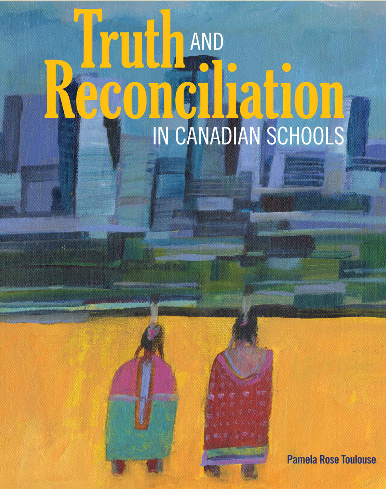Canada has committed to a renewed, nation-to-nation relationship with Indigenous peoples based on recognition of rights, respect, co-operation and partnership, and rooted in the principles of the United Nations Declaration on the Rights of Indigenous Peoples. Teachers can find more information about the Declaration, Canada’s Statement of Support on the United Nations Declaration on the Rights of Indigenous Peoples and learn about Canada’s commitment to implement this declaration.: United Nations Declaration on the Rights of Indigenous Peoples
United Nations Declaration on the Rights of Indigenous Peoples: full text of the declaration.
Promising Practices in Indigenous Education Website (PPW), a virtual library of curriculum materials, relevant policies and research related to successful practices in elementary and secondary education, early childhood education, and parent and community engagement.
Pulling Together: A Guide for Teachers and Instructors Download the Guide
To learn more about interconnection, teachers may visit Crown-Indigenous Relations and Northern Affairs Canada home page . Crown-Indigenous Relations and Northern Affairs Canada (CIRNAC) continues to renew the nation-to-nation, Inuit-Crown, government-to-government relationship between Canada and First Nations, Inuit and Métis; modernize Government of Canada structures to enable Indigenous peoples to build capacity and support their vision of self-determination; and lead the Government of Canada’s work in the North.
Office of the Treaty Commissioner ( OTC website): was created by the Federation of Saskatchewan Indian Nations and the Government of Canada to facilitate treaty discussions between the Government of Canada and the First Nations. Their website provides valuable information, but also they have created The Treaty Essential Learnings document as a reference guide to understanding the foundational aspects of the “Teaching Treaties in the Classroom” program. This document contains topics, concepts and understandings of treaties and the treaty relationship, but also the historical context of treaties. It is a valuable resource for teacher to obtain more information on Treaty Rights.

To know more about The Indian Act policies, reforms, restrictions, challenges and change: The Indian Act
Indian Act (R.S.C., 1985, c. I-5) HTML Full Document: Indian Act
Introduction to the Indian Act
Statement of the Government of Canada on Indian policy: The 1969 White Paper
Whereas Canada is founded upon principles that recognize the supremacy of God and the rule of law: Guarantee of Rights and Freedoms Canadian Charter of Rights and Freedoms
Consolidation of Constitution Acts, 1867 to 1982
Article by Sheila Carr-Stewart: A Treaty Right to Education (2001)A Treaty Right to Education
Truth and Reconciliation in Canadian Schools by Pamela Rose Toulouse (2018). This book is a great resource of current information, interactive strategies and lesson plans that support Indigenous and non-Indigenous learners in the classroom. This book is for all teachers who are looking for ways to respectfully represent residential school history, treaty education, treaty rights, Indigenous contributions in Social Studies classroom.

Resources from the Government of Saskatchewan: Treaty Learning Resources
Book: The UN Declaration on the Rights of Indigenous Peoples: A Commentary by Marc Weller, Jessie Hohmann (2018) Link to Amazon
Book: Aboriginal Rights Are Not Human Rights. In Defence of Indigenous Struggles by Peter Kulchyski (2013) Link
Peacebuilding and the Rights of Indigenous Peoples. Experiences and Strategies for the 21st Century (2017) Editors: Devere, Heather, Te Maihāroa, Kelli, Synott, John P. (Eds.) Link
